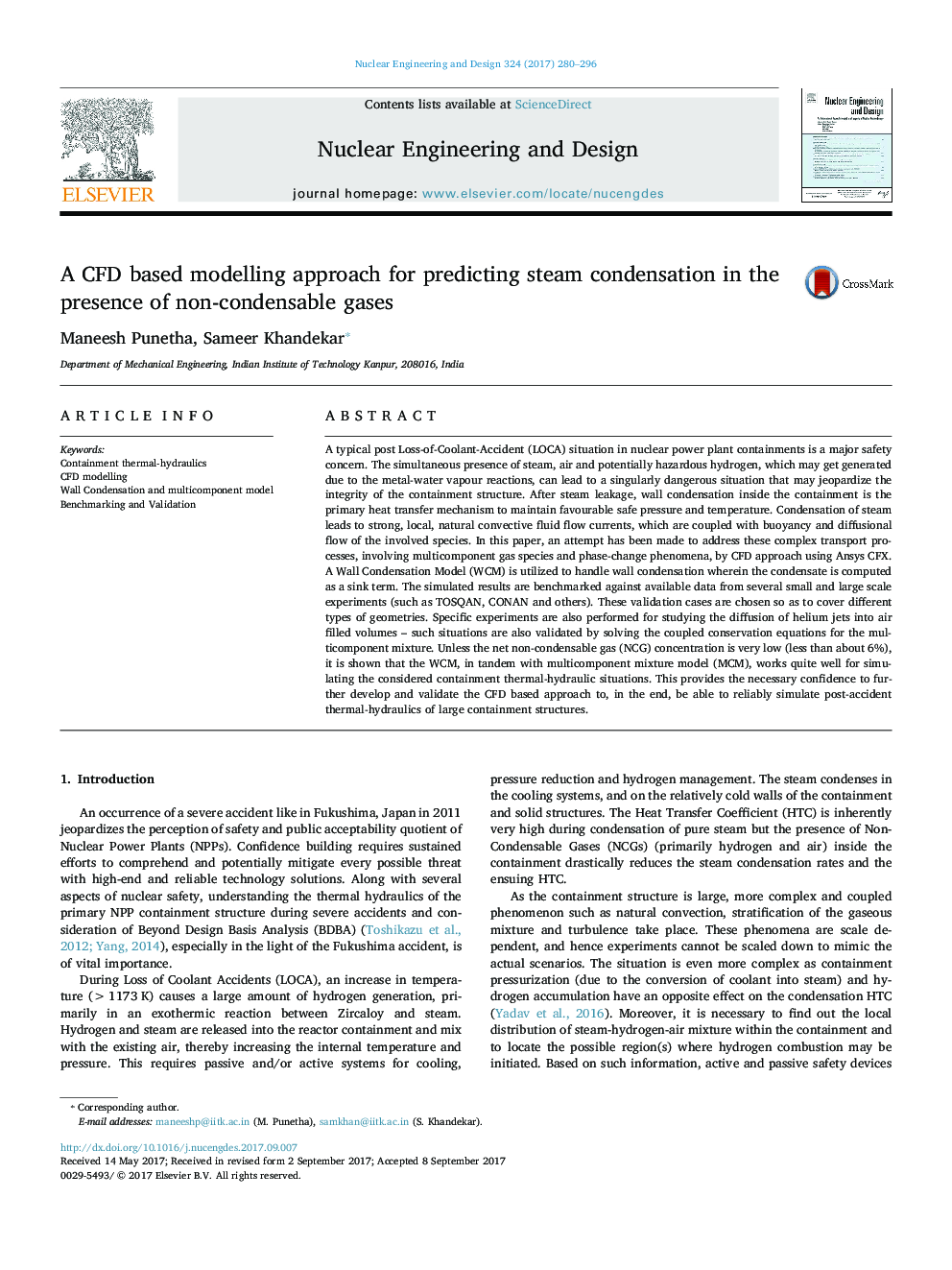| کد مقاله | کد نشریه | سال انتشار | مقاله انگلیسی | نسخه تمام متن |
|---|---|---|---|---|
| 4925380 | 1431397 | 2017 | 17 صفحه PDF | دانلود رایگان |
عنوان انگلیسی مقاله ISI
A CFD based modelling approach for predicting steam condensation in the presence of non-condensable gases
دانلود مقاله + سفارش ترجمه
دانلود مقاله ISI انگلیسی
رایگان برای ایرانیان
کلمات کلیدی
موضوعات مرتبط
مهندسی و علوم پایه
مهندسی انرژی
مهندسی انرژی و فناوری های برق
پیش نمایش صفحه اول مقاله

چکیده انگلیسی
A typical post Loss-of-Coolant-Accident (LOCA) situation in nuclear power plant containments is a major safety concern. The simultaneous presence of steam, air and potentially hazardous hydrogen, which may get generated due to the metal-water vapour reactions, can lead to a singularly dangerous situation that may jeopardize the integrity of the containment structure. After steam leakage, wall condensation inside the containment is the primary heat transfer mechanism to maintain favourable safe pressure and temperature. Condensation of steam leads to strong, local, natural convective fluid flow currents, which are coupled with buoyancy and diffusional flow of the involved species. In this paper, an attempt has been made to address these complex transport processes, involving multicomponent gas species and phase-change phenomena, by CFD approach using Ansys CFX. A Wall Condensation Model (WCM) is utilized to handle wall condensation wherein the condensate is computed as a sink term. The simulated results are benchmarked against available data from several small and large scale experiments (such as TOSQAN, CONAN and others). These validation cases are chosen so as to cover different types of geometries. Specific experiments are also performed for studying the diffusion of helium jets into air filled volumes - such situations are also validated by solving the coupled conservation equations for the multicomponent mixture. Unless the net non-condensable gas (NCG) concentration is very low (less than about 6%), it is shown that the WCM, in tandem with multicomponent mixture model (MCM), works quite well for simulating the considered containment thermal-hydraulic situations. This provides the necessary confidence to further develop and validate the CFD based approach to, in the end, be able to reliably simulate post-accident thermal-hydraulics of large containment structures.
ناشر
Database: Elsevier - ScienceDirect (ساینس دایرکت)
Journal: Nuclear Engineering and Design - Volume 324, 1 December 2017, Pages 280-296
Journal: Nuclear Engineering and Design - Volume 324, 1 December 2017, Pages 280-296
نویسندگان
Maneesh Punetha, Sameer Khandekar,